New Notes
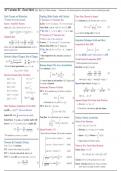
This two-page document provides an in-depth and concise overview of the entirety of the AP Calculus AB/BC course. In it, you will find all the criteria necessary to succeed in these courses, covering limits, derivatives, integrals, and series.
- Summary
- • 2 pages •
This two-page document provides an in-depth and concise overview of the entirety of the AP Calculus AB/BC course. In it, you will find all the criteria necessary to succeed in these courses, covering limits, derivatives, integrals, and series.
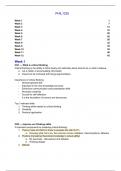
These notes include every week (weeks 1-12) from the philosophy 1230 course. Includes notes from every week's lectures and readings. Extremely comprehensive and helped at least 4 people get a 4.0 in the course.
- Class notes
- • 43 pages •
These notes include every week (weeks 1-12) from the philosophy 1230 course. Includes notes from every week's lectures and readings. Extremely comprehensive and helped at least 4 people get a 4.0 in the course.
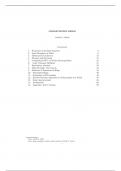
This is a second year algebra course for college
- Class notes
- • 131 pages •
This is a second year algebra course for college

Pharmacology. Drug Classifications for nursing.
- Class notes
- • 133 pages •
Pharmacology. Drug Classifications for nursing.

Unit 1- Biol 230 Athabasca Questions With Complete Solutions
- Exam (elaborations)
- • 30 pages •
Unit 1- Biol 230 Athabasca Questions With Complete Solutions
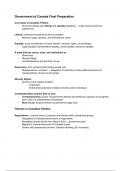
Final preparation for Government of Canada
- Class notes
- • 21 pages •
Final preparation for Government of Canada
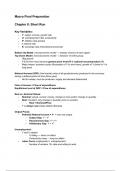
Final preparation for Robert Gateman's Macroeconomics Final
- Package deal
- Class notes
- • 28 pages •
Final preparation for Robert Gateman's Macroeconomics Final
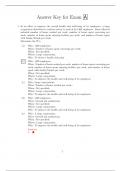
STAB22 midterm
- Exam (elaborations)
- • 25 pages •
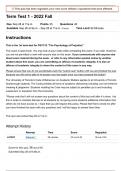
psyc19 term test 1
- Exam (elaborations)
- • 29 pages •
psyc19 term test 1
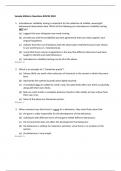
bioc54 midterm
- Exam (elaborations)
- • 229 pages •
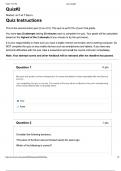
linb18 quiz 2
- Exam (elaborations)
- • 9 pages •

linb18 quiz
- Exam (elaborations)
- • 10 pages •
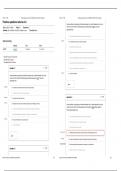
biob38 quiz 3-4
- Exam (elaborations)
- • 21 pages •
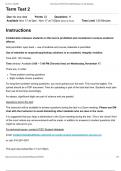
phya11 term test 2 at utsc from 2021 (prof dan weaver)
- Exam (elaborations)
- • 10 pages •
phya11 term test 2 at utsc from 2021 (prof dan weaver)
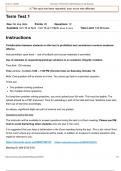
phya11 term test 1 and 2
- Exam (elaborations)
- • 12 pages •
phya11 term test 1 and 2

Test Bank for Modern Blood Banking & Transfusion Practices 7th Edition Author: Denise M. Harmening| 9780803668881| All Chapters 1-29| LATEST VERSION
- Book
- Exam (elaborations)
- • 209 pages •
Test Bank for Modern Blood Banking & Transfusion Practices 7th Edition Author: Denise M. Harmening| 9780803668881| All Chapters 1-29| LATEST VERSION

TEST BANK Microbiology: An Introduction 14th Edition by Gerard J. Tortora| Complete Guide Chapters 1-28
- Book
- Exam (elaborations)
- • 1009 pages •
TEST BANK Microbiology: An Introduction 14th Edition by Gerard J. Tortora| Complete Guide Chapters 1-28

TEST BANK FOR Yoder-Wise's Leading and Managing in Canadian Nursing, 2nd Edition by Patricia S. Yoder-Wise, Janice Waddell, RN, MA, PhD and Nancy Walton ISBN: 9781771721677 COMPLETE GUIDE 100 % VERIFIED A+ GRADE ASSURED !!!!LATEST UPDATE
- Book
- Exam (elaborations)
- • 316 pages •
TEST BANK FOR Yoder-Wise's Leading and Managing in Canadian Nursing, 2nd Edition by Patricia S. Yoder-Wise, Janice Waddell, RN, MA, PhD and Nancy Walton ISBN: 9781771721677 COMPLETE GUIDE 100 % VERIFIED A+ GRADE ASSURED !!!!LATEST UPDATE

TEST BANK FOR Potter and Perry's Canadian Fundamentals of Nursing, 7th Edition by Barbara J. Astle Patricia A. Potter ISBN: 9780323870658 COMPLETE GUIDE 100% VERIFIED A+ GRADE ASSURED!!! NEW LATEST UPDATE!!!!!
- Book
- Exam (elaborations)
- • 1170 pages •
TEST BANK FOR Potter and Perry's Canadian Fundamentals of Nursing, 7th Edition by Barbara J. Astle Patricia A. Potter ISBN: 9780323870658 COMPLETE GUIDE 100% VERIFIED A+ GRADE ASSURED!!! NEW LATEST UPDATE!!!!!

Test Bank - Massage Therapy-Principles and Practice, 7th Edition (Salvo, 2023), Chapter 1-30 | All Chapters
- Book
- Exam (elaborations)
- • 589 pages •
Test Bank - Massage Therapy-Principles and Practice, 7th Edition (Salvo, 2023), Chapter 1-30 | All Chapters

Test Bank - for Introduction to Clinical Pharmacology 11th Edition(Visovsky, 2024), All Chapters 1-23 fully verified
- Book
- Exam (elaborations)
- • 404 pages •
Test Bank - for Introduction to Clinical Pharmacology 11th Edition(Visovsky, 2024), All Chapters 1-23 fully verified

Test Bank for Ethical & Legal Issues in Canadian Nursing, 5ce 5th Edition by Margaret Keatings
- Book
- Exam (elaborations)
- • 107 pages •
Test Bank for Ethical & Legal Issues in Canadian Nursing, 5ce 5th Edition by Margaret Keatings
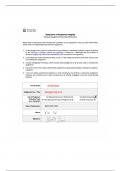
Assignment 3 part 2 - grade: 26/30 A
- Other
- • 8 pages •
Assignment 3 part 2 - grade: 26/30 A
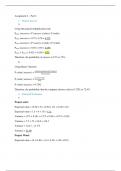
Assignment 2 part 2 - grade: 24/25 A+
- Other
- • 5 pages •
Assignment 2 part 2 - grade: 24/25 A+
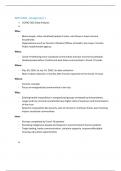
Assignment 1 part 2 - grade: 31/32 A+
- Other
- • 6 pages •
Assignment 1 part 2 - grade: 31/32 A+
